
29 minute read
Español
from 20220324
Vanessa Portras
Cuando era estudiante de primer año en la universidad, tomé una clase de historia del arte. Mi educación sobre el arte antes de esto había sido limitada a proyectos pero realmente no conocía movimientos artísticos o estilos de arte. Como a muchas personas, cada vez que veía una obra, particularmente una obra abstracta, se me hacía ridículo que se le considerara arte.
El arte abstracto es un estilo de arte moderno. Se conoce como arte que no tiene forma o representación realista a algo material. Los artistas abstractos conmueven a su audiencia a través del uso de colores, líneas y aplicaciones. Uno de los artistas de arte abstracto más famosos de los años 1900 era Jackson Pollock.
Pollock era conocido por sus gigantescas pinturas donde usaba la técnica llamada “goteo''. Típicamente, Pollock acostaba un enorme lienzo en el suelo, y usando palos y brochas, dejaba gotear y salpicar la pintura sobre la superfi cie, creando texturas gruesas y múltiples capas de colores.
Yo detestaba a artistas como Pollock. Se me hacía como que eran unos farsantes. Personas que se habían hecho famosos solo por conocer a las personas correctas y no por talento propio. Sé que no soy la única que ha ido a un museo o una galería y ha pensado, “yo pude haber hecho eso”. Así que, con toda la suerte del mundo, cuando llegó la hora de escoger un artista al azar para presentar al fi nal del semestre, desenvolvi mi papelito y lei: “Jackson Pollock”.
Tuve que dejar a un lado mi aberración y parcialidad y aprender sobre el artista y uno de los estilos artísticos más absurdos. Al fi nal de mi presentación, cambié de opinión. No aprendí a amar sus obras ni al hombre detrás de ellas pero si aprendí a apreciarlas. Y como toda una educadora de arte, volví a repetir el mismo proyecto años después con mis alumnos de secundaria.
Hubo algunos de ellos que escogieron a Pollock sobre alguien como Leonardo da Vinci porque pensaron que sería tarea fácil. Pero incluso, hubieron alumnos que como yo en su momento, se vieron frustrados al tener que aceptar que unas gotas salpicadas en papel se podrían considerar arte.
Uno de mis alumnos me dijo,”lo siento, pero no puedo entender como algo que pudo haber hecho un niño de kinder se le llame arte, y mucho menos que se venda por millones”. A los alumnos que escogieron a Pollock les pregunté si había sido tan fácil como se lo imaginaron, y la mayoría respondió diciendo que no. Al parecer, cubrir 160 pies cuadrados no es tan fácil como parece, y vaya que mis alumnos solo estaban haciendo sus réplicas en un papel que media 36 pulgadas cuadradas.
Intente explicarles a mis estudiantes que las obras abstractas expresivas tal y como las que creaba Pollock, están invitando a la audiencia a conectar con sus propias emociones en vez de decirles que sentir. Las interpretaciones de la misma obra pueden ser diferentes de persona a persona. Imaginemos por un momento que soy Pollock, y tomo una cubeta de pintura roja y la dejo caer desde una escalera sobre el lienzo. El resultado que me daría eso sería un lienzo con mucho énfasis en el color rojo y el movimiento que las líneas espontáneas han creado. Muchos asocian el color rojo con coraje o frustración, pero habrá aquellos que sientan alegría, o recuerden la falda de un vestido rojo alzándose al ritmo de la música.
Irónicamente, no llegué a apreciar el arte abstracto o incluso a los artistas de ese movimiento hasta que no tuve forma de expresar lo que sentía y fueron los colores y la aplicación sin fi gura lo que me ayudó. Para mis estudiantes, fue más fácil criticar algo cuando aún no lo entendían. ¿Puedes apreciar algo sin que te guste? No tengo una respuesta sólida para esta pregunta. Pero soy de la opinión que el arte es como un espejo ante nuestra sociedad. Hay muchas ideologías y creencias que no comparto con otros, pero práctico tolerancia, compasión y apreciación. Dentro del mundo del arte, han habido muchos que han retado ideologías antiguas de lo que es y no es el arte. De lo que debemos y no debemos hacer.
El arte, durante tiempos de guerra sirvió como propaganda contra y a favor de diferentes partidos, sirvió para crear empatía, y también para distraer y alegrar las vidas de las personas más afectadas. Al no artista, no te tiene que gustar algo para poder apreciarlo, prestate la oportunidad de ver el mundo desde una perspectiva diferente.
Want to read Vanessa’s column in English? Visit www.vanessaporras.art/
Donaciones por correo o en línea P.O. Box 399 Carbondale, CO 81623 970-510-3003 www.soprissun.com Editor Raleigh Burleigh • 970-510-3003 news@soprissun.com Executive Director Todd Chamberlin • 970-510-0246 adsales@soprissun.com
Editora Contribuyente Crystal Mariscal Directore Artístico Hattie Rensberry Diseñadora de anuncios Alyssa Ohnmacht Traductoras Jacquelinne Castro y Dolores Duarte Distribucion Frederic Kischbaum
Miembros de la Mesa Directiva Klaus Kocher • Kay Clarke Lee Beck • Megan Tackett Gayle Wells • Donna Dayton Terri Ritchie • Eric Smith
el Sol del Valle agradece por su apoyo a: MANUAS, FirstBank y Alpine Bank The Sopris Sun, Inc. es una 501(c)(3) organización benéfica sin fines de lucro. Contribuciones financieras son deducibles de impuestos. ¡ESCRÍBENOS! Para contribuir ideas y contenido al Sol del Valle, escribiéndonos a: sol@soprissun.com Para comprar espacio publicitario en español, inglés, o ambos, mándanos un correo electrónico a: adsales@soprissun.com
También se puede contactarnos llamando a 970-510-3003.
Apr con en la diendo Policia
Aprenda sobre diferentes temas y recursos disponibles en nuestra comunidad.

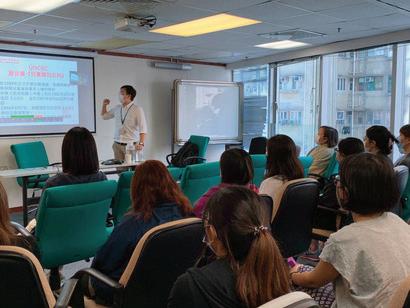
Temas:

Aspen Community Foundation helps children and families thrive from Aspen to Parachute.
Give today.
aspencommunityfoundation.org | 970.925.9300
Sera en Espanol interpretado en ingles, si es necesario

*Habra comida*
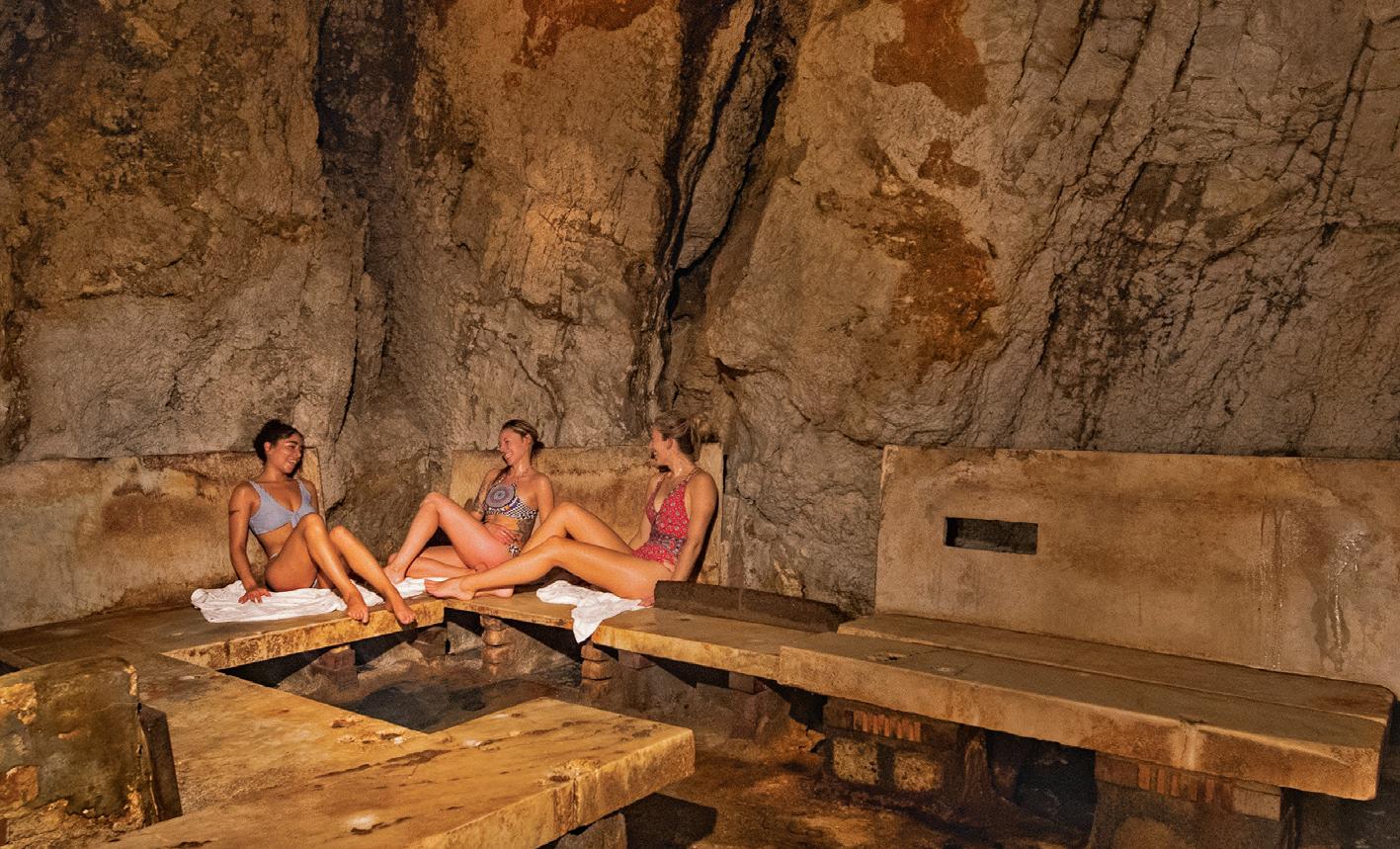
Hosted by: Carbondale Police Department
A LAS 6:30 PM EN EL AYUNTAMIENTO DE CARBONDALE
Como obtener licencia en Colorado Derechos de Victimas e Inmigracion
Derechos de Padres y Juveniles
Casos Criminales vs. Civiles
Educacion en Leyes Criminales
VISITE UNO DE LOS SPAS MAS ANTIGUOS Y RESPETADOS EN AMERICA
y las Cuevas históricas de Vapor
Baños naturales minerals termales “Más privado que una piscina”
No WALKINS Por favor. Llame para citas



El fin de semana del 13 al 14 de marzo, se llevó a cabo el Latino Advocacy Day (Día de la Defensa Latina o LAD por sus siglas en inglés) en Denver. Omar Sarabia, el nuevo director de Defiende Nuestra Tierra en Wilderness Workshop, estuvo presente y pudo compartir con nosotros su experiencia de primera mano.
“La fuerza de Colorado proviene de sus inmigrantes desde sus inicios, y sus hermosos paisajes son igual de diversos que nuestra gente’,’ dijo el Gobernador Polis, que para el defensor de tierras públicas es motivo para continuar con su abogacía.
Pero, ¿qué es LAD y cuál es su importancia? Según Omar, Latino Advocacy Day es un programa organizado por COLOR, Voces Unidas y Protégete y brinda capacitaciones de defensa y sesiones informativas sobre los temas de políticas que más impactan a los latinos en Colorado.
El LAD es una experiencia de defensa que atrae la participación de todo el estado. Más de 200 latinos de todo Colorado se reúnen en Denver cada año, donde también visitan en el capitolio estatal y a sus representantes en persona. Les hacen saber sus inquietudes y problemas que aquejan a sus comunidades a lo largo y ancho del estado. A lo que también agregó Omar, “Creo que este tipo de eventos nos brindan herramientas para poder entender la importancia de la participación civil; tanto local como a nivel estatal. Te acerca a tus representantes y elimina esas barreras de que tus senadores estatales o federales son personas ‘inalcanzables’, si no todo lo contrario: Ellos trabajan para ti y todos sus constituyentes. La casa de representantes es también tu casa y tienes derecho a ir a hablar con ellos para exponerles tus problemas y que tomen acción o para que apoyen o desaprueben alguna propuesta de ley que te afecte directa o indirectamente”.
Algo que mencionaba Omar era la participación de nuevos líderes locales y a jóvenes de la Glenwood Springs Middle School que se involucraron en talleres de abogacía (salud, justicia ambiental y social e inmigración) donde tomaron acción al ir al capitolio a usar esas herramientas obtenidas en sus respectivos talleres y a derribar barreras para exigir y practicar sus derechos.
Todo suena bien y emocionante en papel, pero para los que no tienen el tiempo en el trabajo para involucrarse en este tipo de abogacía, también hay otras maneras donde se puede involucrar. En el Valle, cada municipalidad o ciudad estará corriendo elecciones, desde candidatos, propuestas e incluso impuestos. Para votar no es necesario registrarse bajo algún partido político, puede hacerlo tan fácil como lo es desde su teléfono. Solo vaya a la página de la secretaría del estado (coloradosos.gov) y busque la opción en español de “Registracion de votante”. Es muy importante que vote, y que usted abogue por lo que se alinea más a sus valores y creencias.
“¡No esperen más tiempo y vayan a registrarse!” Concluyó Sarabia. “No dejen en manos de otras personas las decisiones que tú puedes tomar con tu voto. El voto latino tiene mucho poder, tanto así que puede inclinar la balanza para cualquiera de los lados. No importa tu partido, sal y hazte presente”.
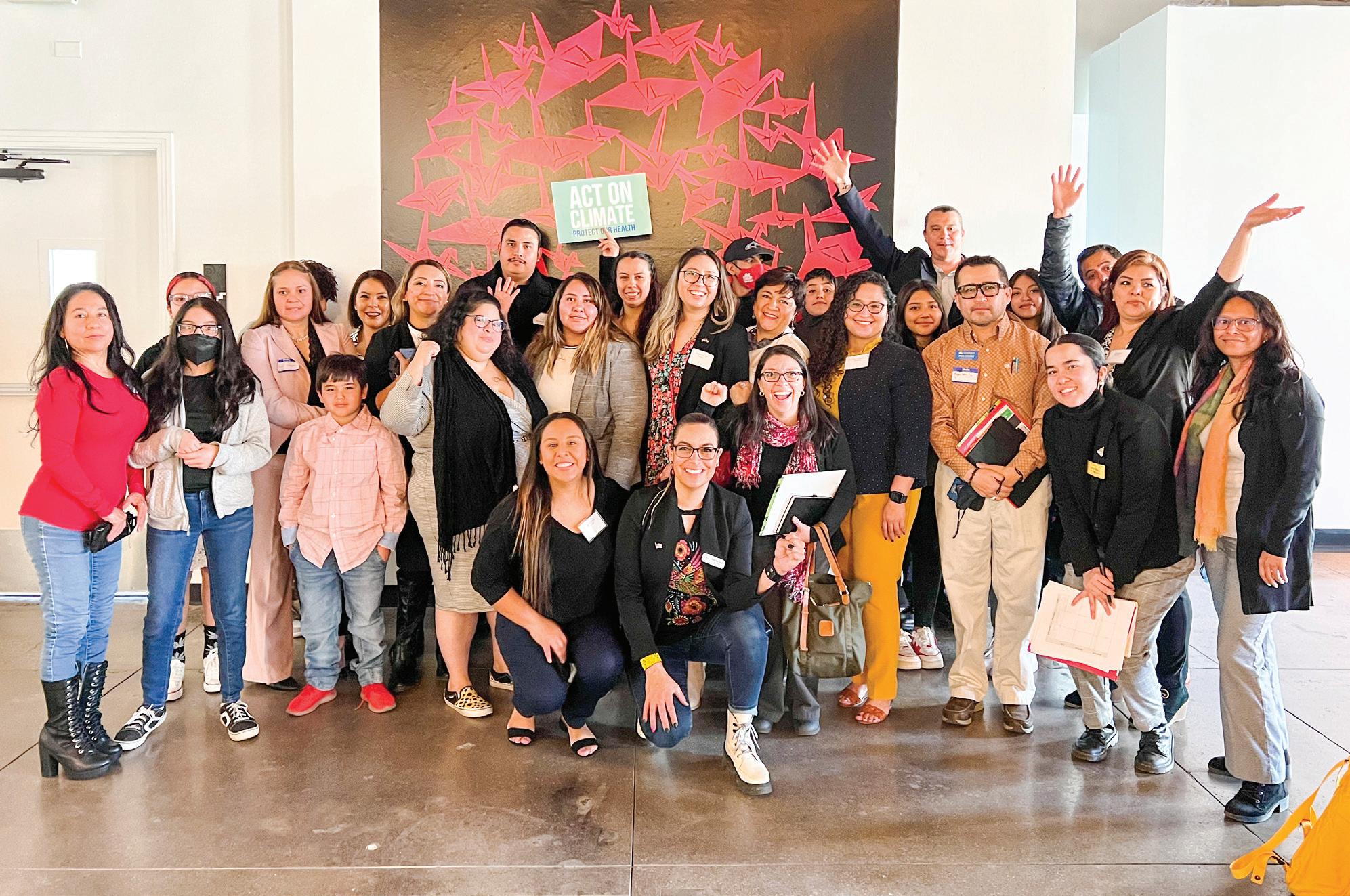
Latino Advocacy Day en Denver. Foto cortesía de Omar Sarabia




Aspen Film, la organización de educación y artes cinematográfi cas que funciona todo el año, anuncia su programa para el 31° Aspen Shortsfest, del 5 al 10 de abril de 2022, con cortos fi lmados en varias partes del mundo, incluido Argentina y Venezuela, al igual que productores latinos.
Día de la madre
El día de la madre se está acercando. Únete a la querida tradición de Th e Sopris Sun de presentar retratos de madres con sus hijos que nacieron en el último año. Llame al 970-456-6929 o envíe un correo electrónico a raleigh@soprissun.com para programar una sesión de fotos en el Sopris Park el 9, 10, 16, 17, 23 o 24 de abril.
Cartel de Mountain Fair
Los diseños para el cartel y la camiseta de Mountain Fair deben ser entregados el 1 de abril. La feria de este año, en el fi n de semana del 29 de julio, coincide con la luna nueva. Por lo tanto, el tema de este año es “Magia de Luna Nueva,” evocando frescura y esperanza, elevándose en nuevas maneras y ver las cosas en un nuevo entorno. El ganador recibirá $750 y cinco camisetas. ¿Tiene algunas preguntas? Contacte a brian@carbondalearts.com
Primer ascenso
La universidad comunitaria Colorado Mountain College invita a los jóvenes a inscribirse en un curso gratuito de varios días al aire libre en las instalaciones de Leadville. Este curso está abierto a todos los estudiantes que vayan a completar su octavo y noveno año esta primavera, y tomará lugar desde el 19 de junio hasta el 24 de junio. Inscripciones deben ser entregadas antes del 22 de abril a www.coloradomtn.edu/fi rstascent
Quitando el estigma
The Safe Abundant Nutrition Alliance (SANA) se ha asociado con el departamento de salud pública del condado de Garfield, River Center, el West Mountain Regional Health Alliance y bancos de alimentos para una nueva campaña, “El Hambre no Tiene Que Ser Un Secreto”. El propósito es crear conciencia acerca de sitios de alimentos, acceso a alimentos y también alentar a las personas a buscar ayuda. Para saber más, sigue el hashtag #hungerdoesnthavetobeasecet o #elhambrenotienequeserunsecreto en las redes sociales.
PUEBLO DE
CARBONDALE Aprendiendo con la policía
El departamento de policía de Carbondale está organizando una serie educacional en español enfocado en proporcionar recursos e información para la comunidad Latina. La comida será proporcionada, además de una interpretación simultánea en inglés, si es necesario. Las sesiones tomarán lugar en el ayuntamiento los viernes por la tarde (29 de abril, 13 de mayo, 20 de mayo, 10 de junio y 24 de junio) a las 6:30 p.m. Para más información, llame al 970-963-2662.
Oportunidades de jardinería
Hay espacios disponibles en el jardín comunitario Good Seed, ubicado en 110 Snowmass Drive en Carbondale. Estos son ofrecidos en términos de “primero llega, primero de los lleva”. Para saber más, llame al 970-963-0229.
ÚLTIMA OPORTUNIDAD DE APORTACIÓN Actualización del Plan Exhaustivo Última casa abierta Evento de reunión
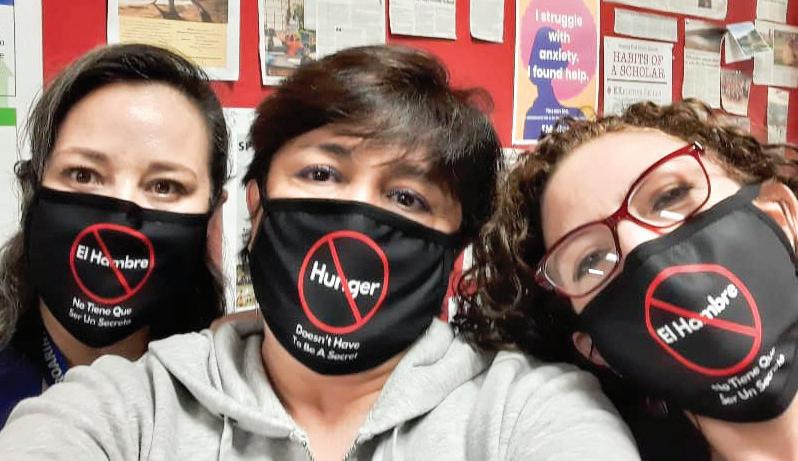
The Safe Abundant Nutrition Alliance (SANA) está avanzando una nueva campaña, “El Hambre no Tiene Que Ser Un Secreto”, con el propósito de asegurar que cada persona tiene acceso a comida sana. Foto de cortesía
Alce de mal humor
Colorado Parks & Wildlife quisiera recordar a los residentes y visitantes que le den espacio a los alces. “Los alces son muy protectores de sus territorios y sus pequeños”, escribió un comunicado de prensa. “Ellos se defienden, a su territorio y a sus pequeños cuando se sienten amenazados”. En América del Norte, los alces atacan a las personas más que los osos y los lobos combinados.
Sendero de Hanging Lake
Great Outdoors Colorado, fundado por los ingresos de lotería estatal, premio un subsidio de $2,282,000 al National Forest Foundation y la ciudad de Glenwood Springs para restaurar el sendero de Hanging Lake, el cual cerró debido al daño excesivo de los flujos de escombros de julio del año pasado. Los fondos ayudarán al estudio topográfico, diseño y construcción para un sendero más resistente y sostenible. El valor económico de Hanging Lake, con la venta de boletos de transporte y reservaciones, está estimado en más de $4.6 millones por año.
Cuentos bilingües
La Escuela Waldorf en el Roaring Fork invita a padres junto a sus hijos e hijas de 18 meses a cuatro años de edad a cantar, jugar, bailar y más, mientras que dos idiomas se tejen. El evento es cada miércoles a las 11 a.m. Para mas informaccion, www.waldorfschoolrf.com
ABRIL 16 A LAS 8:00 PM
UPCOMING
THE ARTS CAMPUS AT WILLITS
TICKETS AT TACAW.ORG
Miércoles 30 de marzo, 2022 6:30 a 8 pm The Launchpad @ 76 S. 4th St.
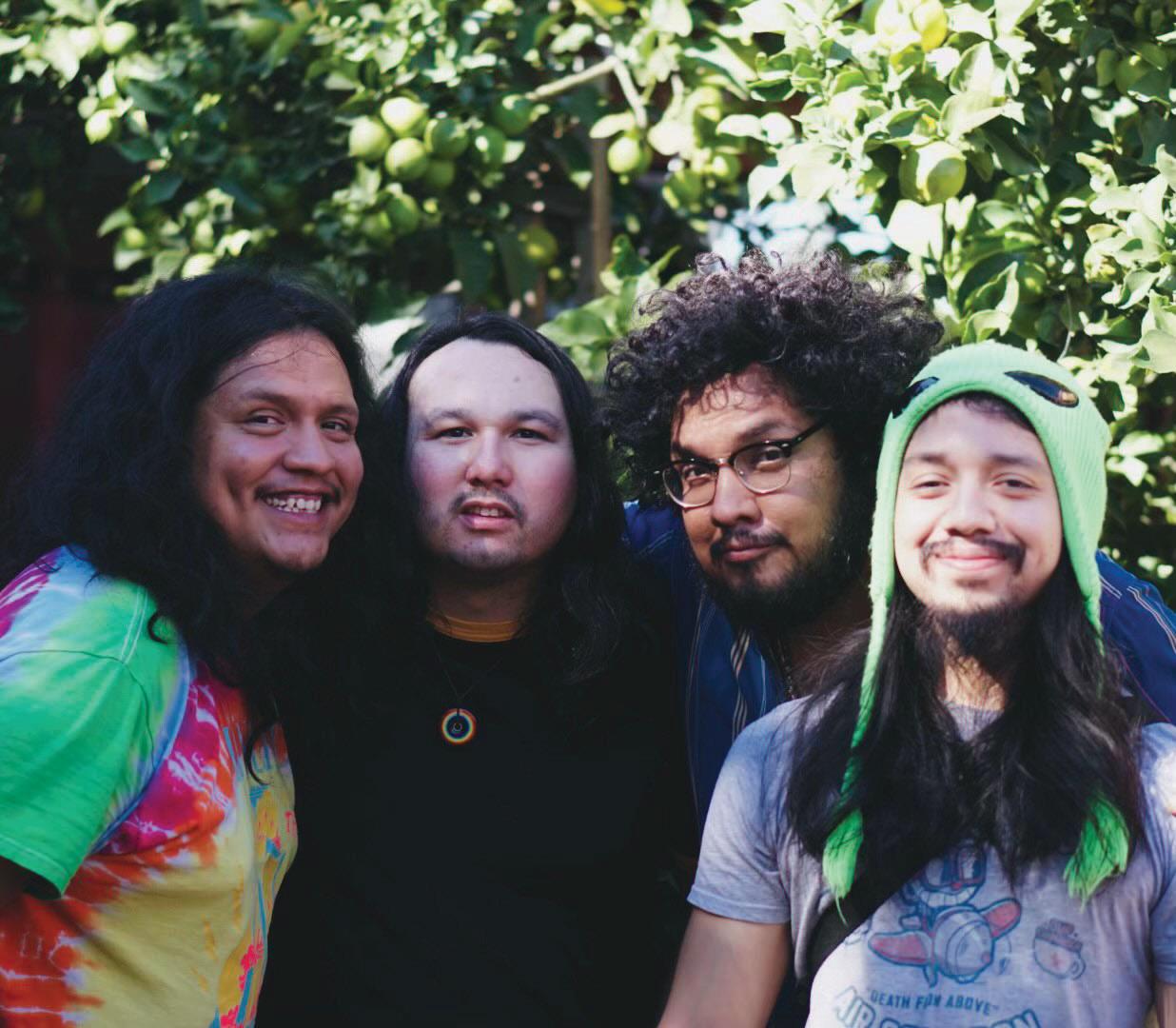
FORMATO ESTILO “CASA ABIERTA”

No habrá presentación, sólo conversación Intérprete de habla hispana disponible Presentado por la Comisión de Planeación y Zonificación de Carbondale INTÉGRESE Y COMENTE ESTACIONES ESTILO “CASA ABIERTA”

Mapa del Uso Futuro de la Tierra Áreas de atención Catálogo de comentarios Conozca los siguientes pasos
¡NO SE PIERDA ESTE EVENTO!
TROPA MAGICA
GÉNERO: CUMBIA // PSYCHEDELICA
“Estimulante”, “brillante” y “carismático” son solo algunos de los adjetivos que se utilizan para describir Tropa Magica.
A LAS 8:00 PM // LAS PUERTAS ABREN A LAS 7:00PM $12 MIEMBROS // $15 POR ANTICIPADO // $20 DÍA DEL SHOW
November 13, 1937 - March 19, 2021
James Breasted, a former Aspen City Councilman and Pitkin County Planning Commissioner who helped create the Roaring Fork Valley bus system and pushed for wilderness preservation of the Hunter Creek area above Aspen, died Saturday at his home in Carbondale. He was 84.
James Henry Breasted lll (“Jim” to all familiars here) was born in 1937 in Colorado Springs, the son of James Henry Breasted Jr., a teacher and art historian, and Helen Culver Ewing Breasted, a homemaker. His grandfather, James Henry Breasted, was America’s preeminent Egyptologist in the early 20th century. His great aunt, Helen Culver, was Chicago’s first successful businesswoman and gave her cousin Charles Hull’s house to Jane Addams, founder of the settlement house movement in America.
Young Jim’s family moved to southern California when he was four. Two years later, his father became director of the Los Angeles County Museum. Th e Breasted children spent vacations at Desert Sun School’s summer camp in Idyllwild, California. Jim liked to recall that he fi rst fell in love with mountains there, nestled among the Sierra Nevadas.
In 1952, his family moved to Kent, Connecticut, where his father took a job as an art history teacher at Kent School. Jim was sent to the buttoned-up boarding school Phillips Academy Andover. He was a good student, but he hated the school. He ran away in the spring of his sophomore year. He was picked up by police on the Pennsylvania Turnpike trying to hitchhike to California. He fi nished out the year at Andover but already knew where he wanted to enroll the next year.
Th at was Putney School in southern Vermont, sitting atop a beautiful wide green hill looking out for miles across the rolling green countryside. It was the look of the landscape that captivated Jim fi rst and only later the school’s invigorating progressive style.
Jim fi rst convinced the Putney admissions director (later headmaster) Ben Rockwell that he was an ideal fi t for Putney, then prevailed upon Rockwell to convince his father that Putney was suffi ciently rigorous. Jim spent only one year at Putney, for his parents took their fi ve children to Europe the following year. Jim was enrolled in a French-speaking Swiss school on the Lake of Lausanne, Institut Monivert.
But Putney, with its wonderful music courses and unique approach to educating the young to challenge themselves in all aspects of creative, physical, esthetic, moral and intellectual life, left upon Jim a deep and lasting impression. At every opportunity when he subsequently attended Harvard, he went back up to Putney to hear the music, visit with Rockwell and contemplate the school’s Th oreauvian ethos for making the most out of all aspects of life.
His generation was hearing from the Beats and from Hemingway and Salinger that living as a free spirit was far superior to the middle class careerist rat race. His parents still hoped he might fi nd a career he liked. He kept stalling, working fi rst a year aft er graduation in the Cambridge Tennis & Squash Shop in Harvard Square. Th en he tried the Peace Corps teaching French to little boys in the Ivory Coast in Africa. He disliked the French rote learning system he was required to practice and came home midway through his two-year assignment. Th reatened by the draft and the Vietnam War, he joined the Air Force Reserves, spending six months sweeping out planes in Texas.
He tried two stints of graduate school in architecture to please his father. But, by then he had visited Aspen with a friend, seen the mountains and heard the music festival. He gave up on architecture, moved into the Garret, took waiter jobs and was happy. Eventually he discovered Alpine Surveys and its wonderful flex hours for skiers and hikers like himself. He would keep his job as a surveyor there until the financial crisis of 2009 wiped out the business.
Th e 1970s were his busiest years when he ran for offi ce, entered numerous cross country ski races (placing 84th one year out of 5,000 racers in the 55-kilometer American Birkebeiner race) and married his youngest sister’s best friend, Jennifer Deveaux. Th ey owned two older houses in Aspen and Woody Creek before he designed a third one for them in Aspen’s West End. Th at was sold for $55,000 in 1982 as they were divorcing. Recently, it sold for $10 million.
Jim had long since moved to Carbondale, living on Sopris Avenue until three years ago when he moved into the Crystal Meadows senior housing development. When Aspen’s list of billionaires reached a total of 50, Jim sent the news out to all his friends and family. Many of his buddies from the Garret had also moved to Carbondale.
“I love living here,” he wrote the Sun last April — his letters to the editor were famous — “Housing is being built right in town where it should be. People will still be moving here because they love this place. Aspen: eat your heart out.”
Jim is survived by his sister Barbara Whitesides of Newton, Massachusetts, his brother John Breasted of Great Barrington, Massachusetts, his sister Mary Breasted Smyth of Tamworth, New Hampshire, and his sister Helen Breasted of New Gloucester, Maine. There will be a small memorial gathering for him this Saturday afternoon in the Third Street Center at 3 p.m.
Carbondale has an independent bookstore again!

This courtesy photo was taken around the time Jim arrived to Aspen.
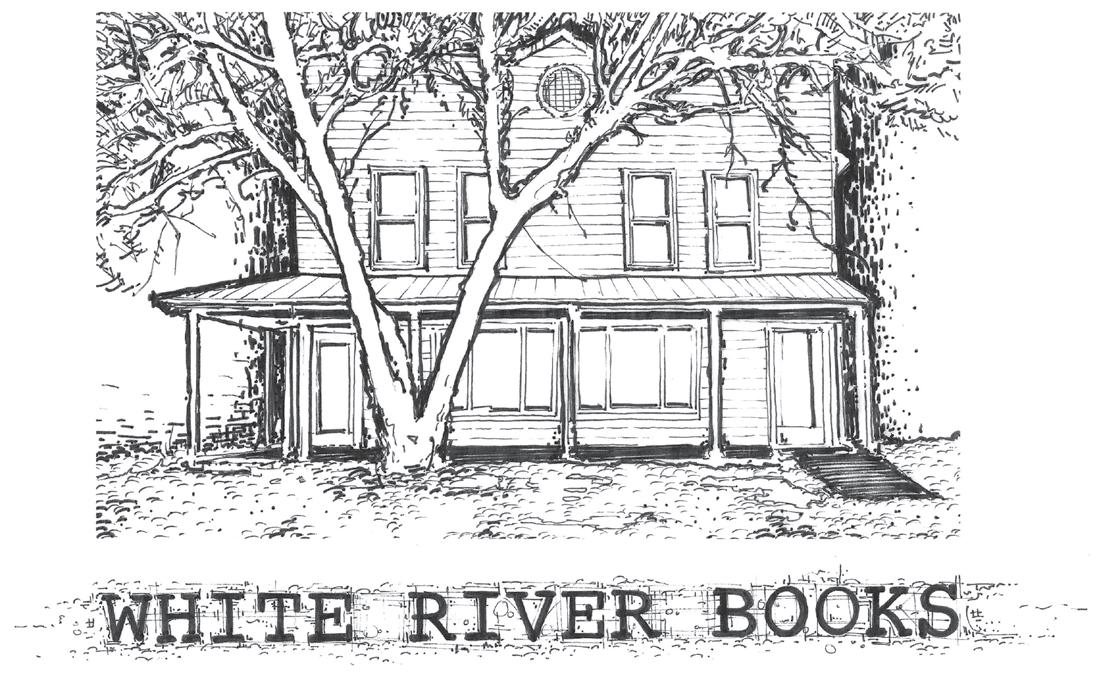
Now Open! 65 N 2nd Street, Downtown Carbondale Hours: Tues. 10-3; Wed.-Sat. 10-5; Sun. 12-4. Closed Mondays. Email: whiteriverbookinfo@gmail.com Phone: 970-340-4503 • Instagram: @whiteriverbooks

Your Skin Will Love Our Monthly Special

Sweet Orange Body Masque,

Private Mineral Bath and a Day Pass to the Vapor Caves “It’s a Day at the Spa” $126 “This Is the Way” by Rev. A.G. Norris



Sunday, March 27, 2022 at 10:00am Third Street Center • Carbondale
There is an inkling in the human mind that there is a path or a way to live a life, some grand design that if one were to bend to it, they might expect that they have a happy and contented life. We will look at that idea of “The Way” through some of the observations of Lao Tzu. Join us this Sunday in-person at the Third Street Center or online through Zoom and Facebook, as Rev. Aaron Norris explores, “This Is the Way,” accompanied by guest musicians.
Applying for a hunting license can be confusing at fi rst. Between Colorado Parks and Wildlife (CPW) regulations and plain old hunter strategy, I’m still learning the ins and outs, 20 years in. If you’re even reading this, you’re most likely a new hunter, so we’ll stick to the basics together (and save mastery aspects, such as preference points, for the trophy hunters).
Th e primary draw lottery for big game licenses opened March 1. Hunters now have until 8 p.m., April 5, to apply. Aft er April 5, lottery winner hunting tags are mailed out. Any remaining tags carry over to the secondary draw, on July 5 — a relief to many hunters who simply didn't get it together the fi rst time around (she says, casting her eyes sideways).
Foremost, to purchase a hunting license, you’ll need your hunter education card, which has your conservation identifi cation number (CID) on it. Like a drivers license or social security card, it’s your number for life. You will use your CID every time you purchase stamps and licenses from CPW. I still have my original one from 2001, and I cherish it. Every hunt has left its mark on that worn out scrap of paperboard, as you must carry it in the fi eld with you whenever you hunt.
CPW publishes an annual Big Game Brochure. Get it. This is your “operator manual.” In addition to helping you plan your hunt, it has this year’s new changes, hunting regulations, definitions, the Game Management Unit (GMU) map (more on that later) and all the possible hunt codes to apply for deer, elk, pronghorn, bear and moose. Read that baby. You are obligated to, and are accountable to everything in it if you’re going to hunt in Colorado.
Page 14 introduces the Habitat Stamp. It is automatically added to your first fishing or hunting license each year, with the proceeds funding the Colorado Wildlife Habitat Program. Further down, the brochure then lists several “qualifying” licenses, one of which we must purchase prior to buying a big game license. I buy a combo small game and fishing license each year anyway, so this relatively new qualifier doesn’t bother me. Some are a little miffed, but I’m happy to pay into conservation.
With the qualifiers taken care of, which species do you want to try for?
As a newbie, your best odds are deer and elk. Th e other highly sought aft er species have a “prerequisite” you most likely haven’t accumulated yet — those preference points we glossed over earlier.
Elk are challenging to hunt. They’re powerful, fast and have keen eyes and hearing. I’m hungry to experience a shot at meat in the freezer after a handful of unsuccessful years focused on elk, so I’m looking forward to a more relaxing, higher odds deer hunt this fall.
Species chosen; where to hunt?
Colorado lands are divided into GMUs. Th ey are to wildlife as counties are to humans. CPW uses GMUs to manage wildlife herds — they can count herd numbers, track changes over time and use this data to limit or increase hunting licenses in that area. Th e GMU map is on the inside back cover of the brochure, preceded by the GMU listing of physical boundary descriptions. Th ese are oft en defi ned by waterways, roads, ridges and valleys and county lines. For example, if someone were to hunt the west side of McClure, they would apply for GMU 521, defi ned on the east by Huntsman’s Ridge and the backbone of the Raggeds.
Which season to hunt? Flip to your species; find your GMU; pick your first choice, second, third and fourth, for the season dates you’re able to hunt. If you do know you want a shot at a trophy animal or unique species, make your first choice a preference point each year.
You can also strategize for more than one license in a hunting season. You can apply for another species (elk or bear), or wait for the primary draw to pass and then apply for a secondary draw tag, or purchase over-the-counter, unlimited tags. Read more about these List A, B or C tags inside the brochure.
You are ready to apply online now, at cpw.state.co.us. The application fee is non-refundable, and you pay for your license if you draw. Now go set yourself up for one of the most profound experiences a human can have!
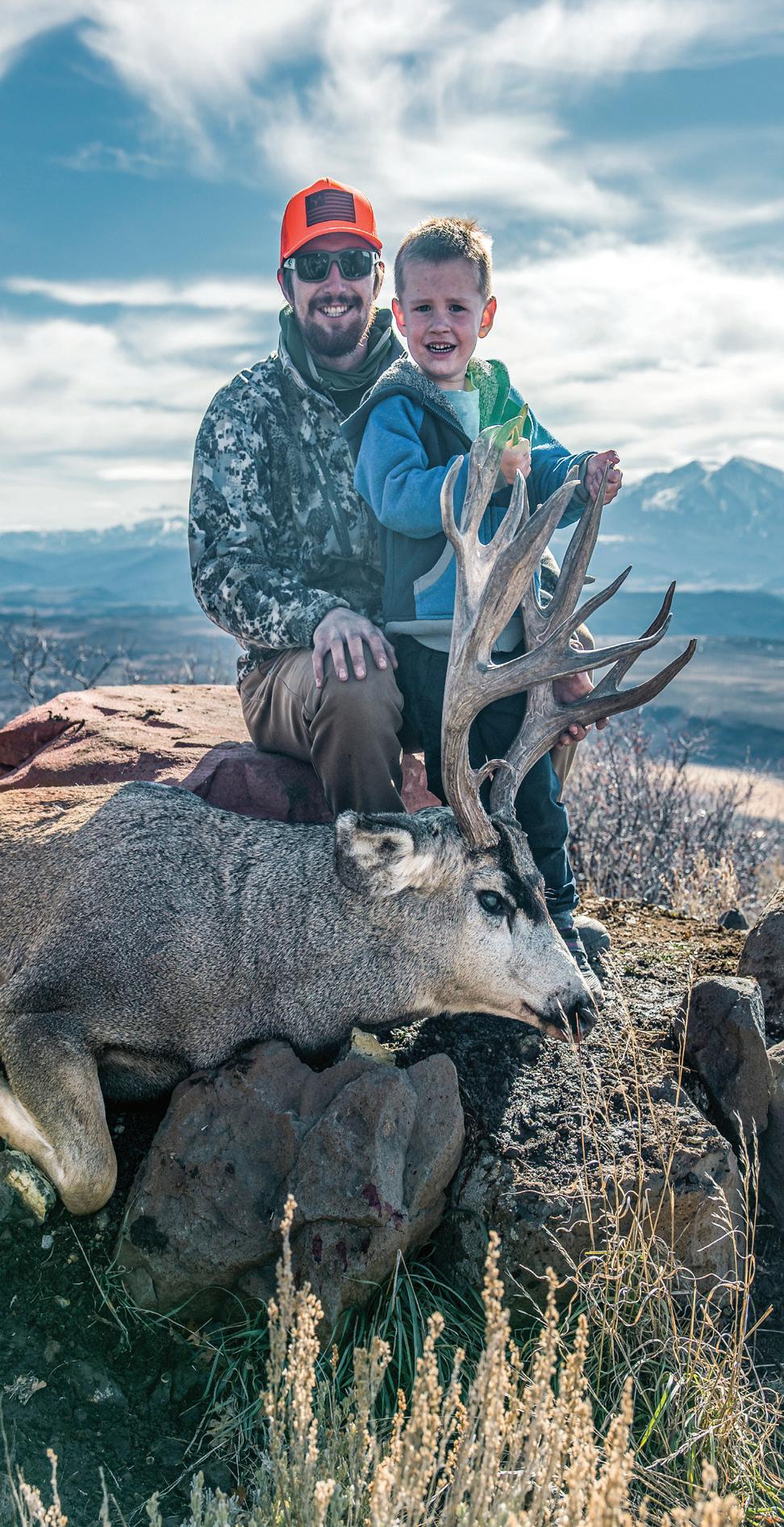
Emmett Leable and cousin Mike Marzahl smile with joy after Mike shot a once-in-a-lifetime buck in the Roaring Fork Valley. This buck was shot on Nov. 13, 2021, and was nicknamed the "Fire Buck" because of how unique his rack was. Photo by Jacob LaVine




Trailer park residents plot to become landowners
Just outside Durango, there’s a trailer park called Westside that I’ve been driving by all my life. Yet residents there have long lived with the fear that at any time their homes could be taken from them, and now, the worst has happened.
A few days before Christmas, Westside residents received notice that the 5.6 acres of land under their homes, with 60 lots, was for sale for $5.5 million. Th e message was in English, and Alejandra Chavez and her neighbors, who mostly speak Spanish and work service jobs, were devastated.
Alejandra was 13 when she left her native Mexico in 2005 to join her family in Durango. Her parents, Juanita and Alejandro, chose Westside because it was close to town, and they could get to and from work without a vehicle.
Th ey bought their current home in 2010 for $10,000, and since then have invested another $15,000 in remodels. Th eir home is their biggest asset.
“Honestly, my parents would lose everything,” Alejandra told me. “If we wanted to move their trailer, it would break apart.”
Trailer parks like Westside are always vulnerable to speculators. As land prices skyrocket in the West, trailer parks have attracted the interest of large corporations and private equity funds. Th e trend is so strong that two real estate tycoons launched a website called Mobile Home University to teach investors how to get in “on the ground fl oor.”
But now, thanks to a new Colorado law, residents like Alejandra Chavez and her parents can fi ght back because owners of trailer parks must provide residents with 90-day notice of their intent to sell. Before the law, trailer parks could change owners without residents even knowing that the park was up for sale. Now, park inhabitants have a chance to form a cooperative, secure fi nancing and even make an off er of their own. Th e residents of Westside jumped at the opportunity.
In early January, Westside residents formed the Westside Cooperative, which Chavez cochairs. Th eir deadline to secure fi nancing and submit a purchase off er was March 20.
Th e Westside group has a successful model. In 2021, the residents of Animas View Mobile Home, north of Durango, successfully purchased their community for $14 million. Seeing a similar situation at Westside, Animas View resident Dan Hunt off ered to help out by walking door-to-door, spreading the word about residentowned trailer parks.
“Our goal was for everyone to be able to aff ord it,” Hunt told me. “Th ose with the lowest incomes are at risk of being displaced, which is a terrible scenario. Now that we have control, we have plans to stabilize rents and invest in our park.”
“We want to follow in their footsteps,” Chavez says.
At fi rst, Westside families were wary, as many wondered who would fi nance the purchase. Th e price of $5.5 million sounded like a huge amount of money.
Organizations — and public offi cials — off ered advice, but Elevation Community Land Trust, a nonprofi t dedicated to making homeownership more aff ordable for Colorado residents, stepped up to off er fi nancial support. Elevation CEO Stefk a Fanchi said the trust’s goal is to help places like Westside leverage the community trust model so housing remains stable for the foreseeable future.
La Plata County offi cials helped Westside put together a competitive purchase off er. Th en things started moving fast over a recent weekend, the owner rejected their fi rst purchase off er, requesting a cash off er, and a quicker timeline. Westside has established a GoFundMe page and now has until March 27 to raise $500,000.
Th e big question is whether the owner, Neal Kurzner, will accept their off er. Kurzner is a New York investor who owns apartment buildings and trailer parks across the nation.
“To me it’s going to come down to economics,” Kurzner told me over the phone. “And timing. Th at’s really how we’ll be making our decision.”
Kurzner has already been negotiating to sell Westside to Harmony Communities, a company based in California that operates 33 trailer parks in the Southwest. Harmony has a history of purchasing parks in Colorado, then immediately hiking rents by as much as 50%.
Residents think their off er will be attractive to Kurzner: “We don’t want anyone to gift us anything,” Alejandra’s mother, Juanita, told me during a recent visit to Westside. “We just want an opportunity to get ahead. And why not?”
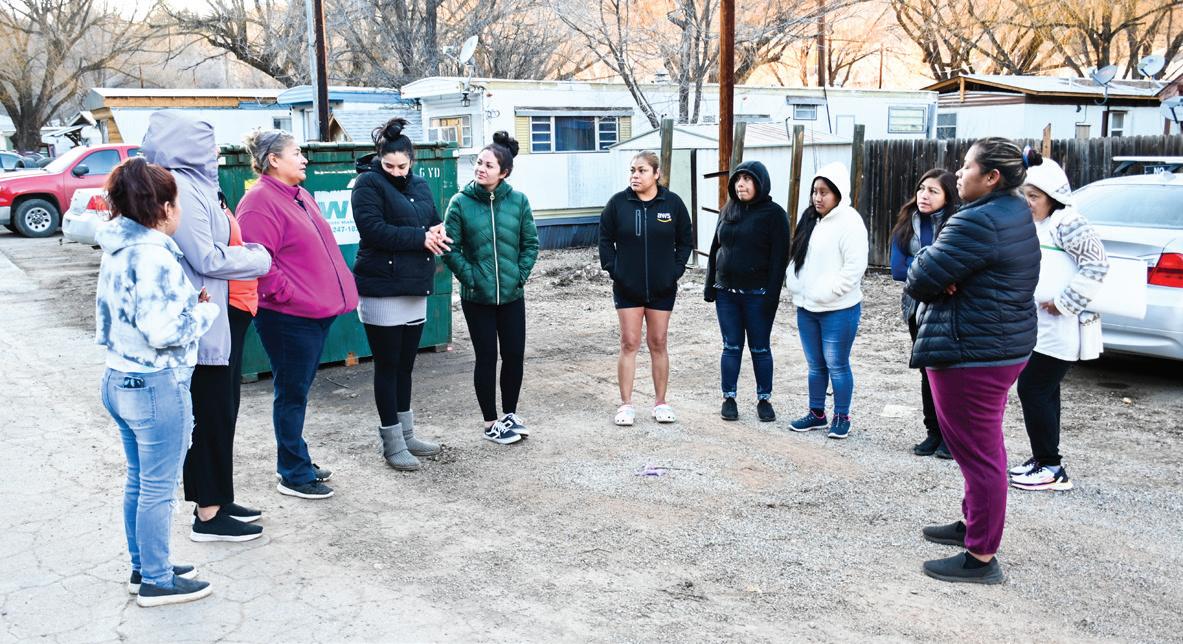
An informal meeting of Westside mothers after the big meeting of all park residents last week. Photo by Ben Waddell
Writers on the Range
By Benjamin Waddell
Benjamin Waddell is a contributor to Writers on the Range, writersontherange. org, a nonprofi t dedicated to spurring lively conversation about the West. He is an associate professor of sociology at Fort Lewis College in Durango.
CELEBRATE #MEATIN at the CO-OP! CELEBRATE
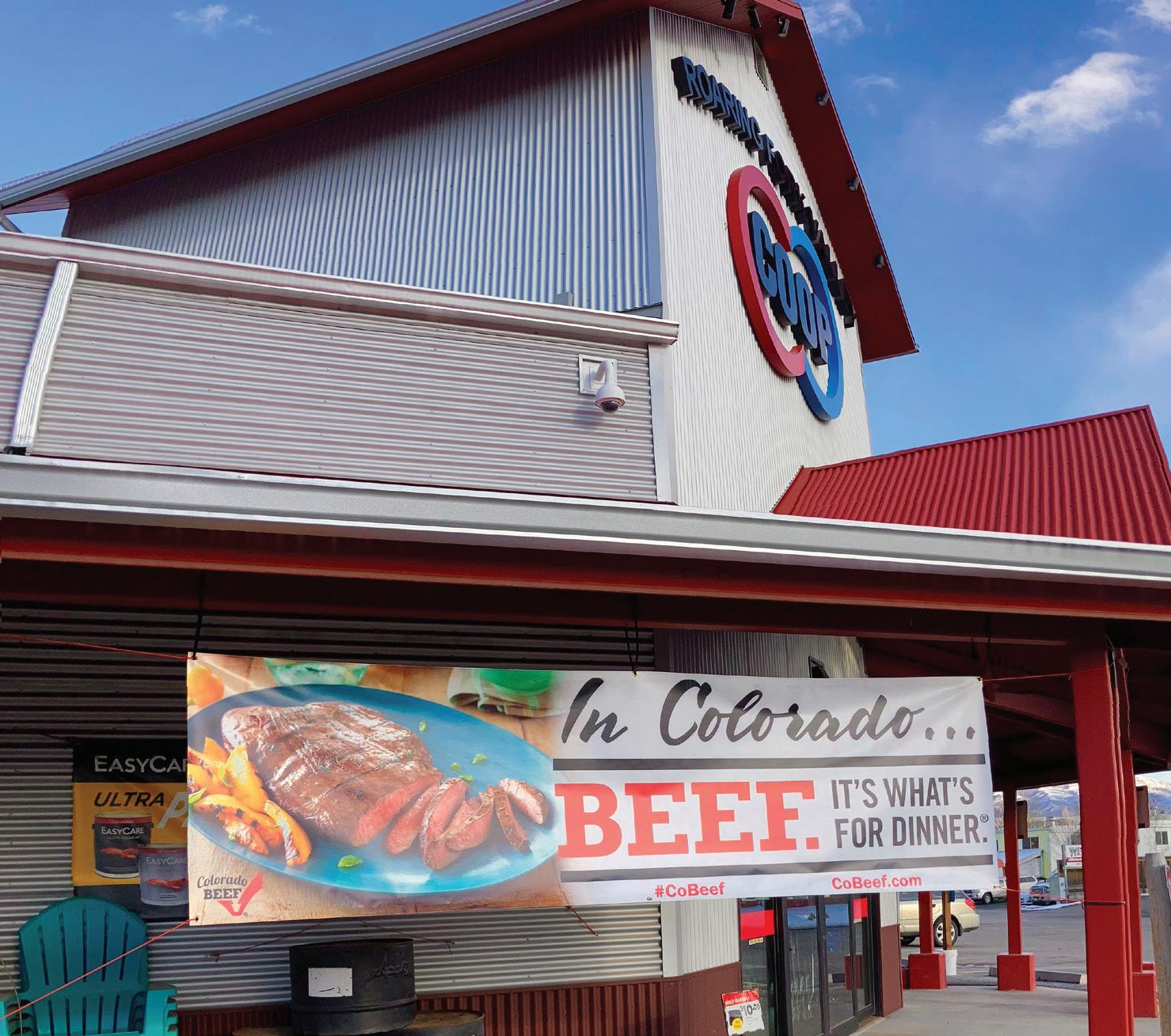
Stop by the Co-op on March 31st for free food, bargains on ground beef, and one last chance to enter to win one of three coolers filled with local beef! We’ll draw three winners at 2pm, so get those entries in!

Holy Cross Cattleman’s Association and Roaring Fork Valley Co-op will donate the proceeds from this drawing to BeefSticks For Backpacks, a non-profit organization commited to distributing high quality, high protein beef sticks to kids backpack programs throughout Colorado. Find out more at www.beefsticks.org!
FAITH, FAMILY, AND FRIENDS!
KEEP A PMA (Positive Mental Attitude) • FINISH STRONG LOVE CRITTERS especially Goldens Frosty Merriott CPA For Town Trustee
Carly and I moved here with our 4-year-old in March of 1998. Shiloh attended Roaring Fork High School and Louisiana Tech University. She is currently a Registered Nurse in Denver and was a recipient of the Daisy Award at St Anthony’s during the Covid crisis. Carly, my wife of 38 years, is Office Manager for J Frost Merriott Inc. CPA which is now in its 24th year. My daughter Heather has her doctorate in Exercise Science and is a Technical Writer for St Jude’s in Memphis.
I currently serve as a member of Town Environmental Board and the Carbondale Chamber of Commerce Executive Board. To my knowledge there are no Board members who belong to the Carbondale Chamber of Commerce. If there is any time, we need private sector representatives on the Town Trustees it is now.
• Housing- I advocate that we flip the current ration of required affordable housing so that a developer would be required to pro-be required to pro
vide 80% affordable units as opposed to the current 20% required. Additionally, only current Carbondale residents or workers would be eligible to apply. The downtown land we were gifted could accommodate 200-250 +/- community housing units. Infrastructure is in place and there is $400 million in Federal funds available. This would require an easy zoning change. • Sustainability, resiliency, climate change and a looming water shortage should be a priority. Except for workforce housing, I would press any development to conform to our Climate
Action Plan, our VCAPS (Water, Vulnerability, Consequences, Adaption and Planning scenarios), and EBOR (Environmental Bill of Rights). • Unknowns - We need to ascertain that our new Comprehensive Plan
Modification allows for the flexibility to prepare for the future. How will it deal with redevelopment of the old
City Market location? What about an annexation request from the area adjacent to River Valley Ranch?
Based on my 10 years serving on the Board of Trustees and my CPA business experience, along with the Vision and Passion I have for Carbondale, I am the most qualified candidate to help lead us forward in our quest to be a more sustainable and vibrant community.


